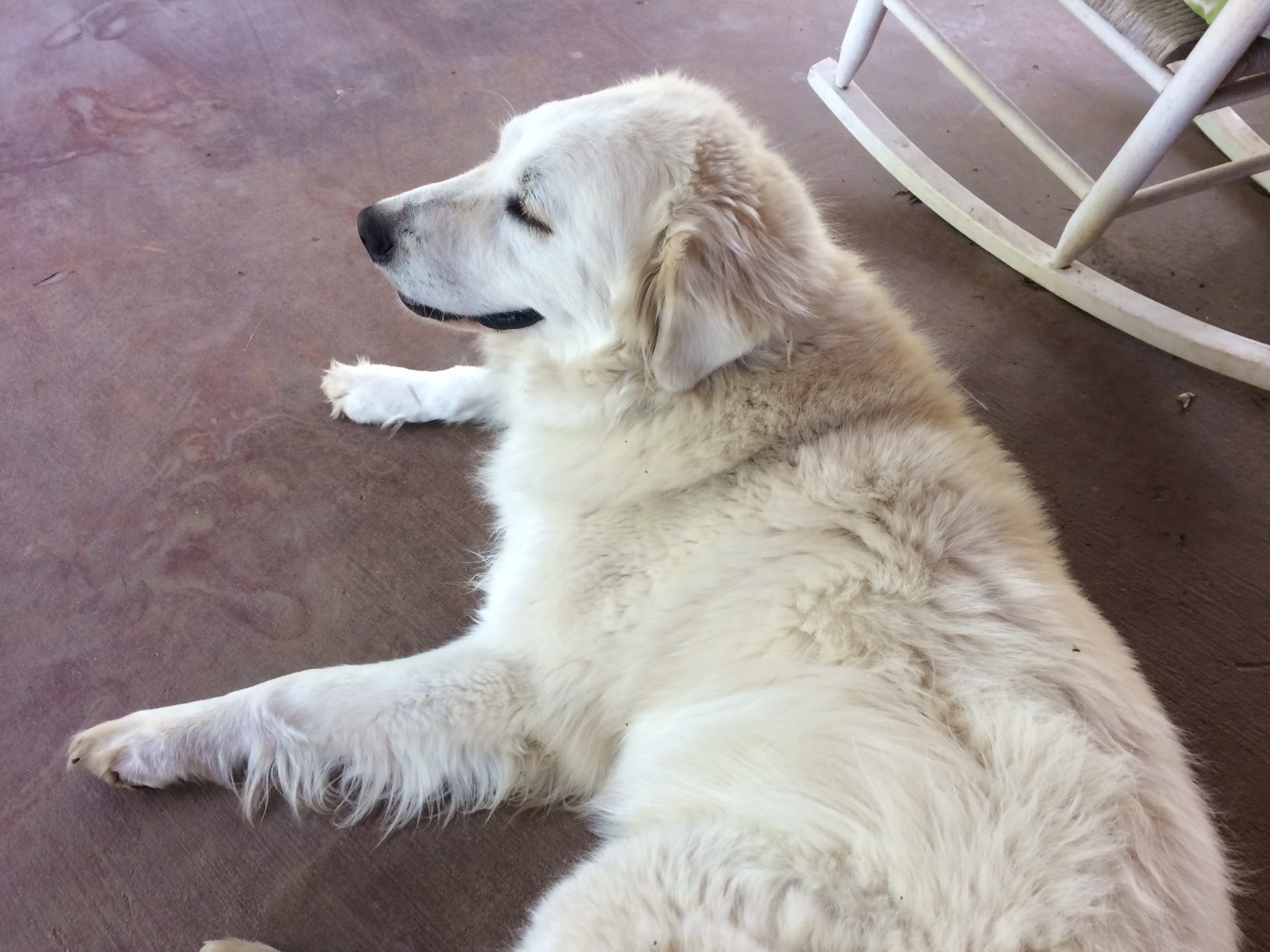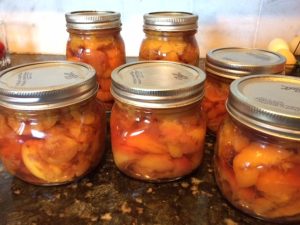
I saw my Great Pyrenees jump three feet in the air earlier in the week, he grabbed a branch of a peach tree with his jaws and pulled it down to unbalance a squirrel. The Karakachan, barking madly, was defending the squirrel’s escape through a second peach tree. I walked out with my broom to help. Describing the scene to my son later, it took a few minutes to sort out that I went out in support of the dogs–not the squirrel. I am the Plantswoman after all. These two dear trees have battled their way through a big patch of underground Calcareous soil, negotiated a bad late freeze, resisted the fearsome plum curculio that burrows into peaches and they have somehow avoided the ubiquitous peach curl.
I would share a few peaches with the wretched squirrels, but they will take a bite from every peach on the tree looking for a ripe one. So in a primitive kind of air support, I was shoving my broom into the upper branches of the trees. The squirrel made the most amazing leap for the fence, covering maybe 10 feet. The Pyr had the very end of his tail for a fraction of a second, then the highly motivated squirrel jumped more than 10 feet to land in the 60-foot Live Oak and won the day. The dogs and I stared in admiration.
Not surprisingly, I was on the side of the microbes, bees and butterflies while I was waiting in line at Home Depot later that day. Ahead of me was an intelligent, thoughtful-looking man paying for a huge stack of bags and several large plastic bottles. The bag labels promised to grow grass and eliminate ‘weeds’; I could not read the bottle labels. I have the deepest respect for anyone who wants\s to grow anything in our rocky soil and hot summers. I entertained myself by imagining that the man had carefully researched the weed killer to make sure that the microbes and earthworms in his yard would be safe and that he had made sure the bottles contained nothing that would harm bees and butterflies. I am an optimist.
But not a purist. I shot a little Round-up on two 6-inch sticker bushes in the back pasture only this morning. I use this weed killer very sparingly. Round-up isn’t even a poison; it prevents amino acid uptake in plants and every plant it touches dies by the application of modern chemistry. https://www.biology.iupui.edu/biocourses/N100/goodfor13.html This isn’t to say Round-up is a good thing. Not only did Round-up come out of research that produced Agent Orange, millions of gallons are poured onto farmland every year. Nevertheless, when a prairie plant is pulled up, it leaves a hundred little roots that turn quickly into a hundred plants- often with stickers. I have studied modest Round-up use and believe, used sparingly, it may stay in the soil for about four months. Even experts at the Ladybird Johnson Wildflower Center believe it is safe for pollinators and probably safe for microbes and earthworms. I guess the point is a gardener should research what any chemical does and have a good reason to use it (my poor lambs suffer from stickers in their little faces) and use it as rarely as possible. I like using a broad approach.
Such an approach is sometimes termed ‘holism’. In his Metaphysics, Aristotle, summarized holism as “The whole is more than the sum of its parts.” Holism Gardeners would love to believe that they can eliminate problems if they create a healthy whole. The philosophical roots of holism raise the question of ‘healthy’ for who? I imagine the principle could be argued from the side of aphids or stink bugs or fungus since they have a point of view too. But the concept– from the human perspective– is very tempting. Even the very conservative Texas A&M University devotes two acres to a holistic garden. A&M Holistic Garden It seems wise for humans to devote themselves to overall health: of themselves and their favored plants, animals, insects and microbes. It seems a good goal to be be on the side of the long view and not a quick fix in a brightly colored bag.
If everything works together; if the soil full of healthy microbes and rich nutrients; if the air is clean and the rain plentiful, but not too plentiful; if pollinators are healthy and abundant—then a plant or tree is full of vigor and able to resist diseases. It can be filled with the joy of living and can, for example, produce peaches. That wind up as Brandied Peaches on the Plantswoman’s kitchen counter.
